When we started to plan our trip, Alex and I intended to spend the whole summer in Ireland. We had some difficulty finding two long-term rentals in Irish towns that wouldn’t require a car and weren’t outrageously expensive, so we looked into options in the UK. We wanted to avoid cities (higher cost-of-living + Edinburgh Fringe Festival in August), see new places, and be close enough to Liverpool that we could take the train there for a football match, as we’d be living in the UK for the first few weeks of the Premier League season.
That’s how we ended up spending most of August in the basement unit of an NHS administrator’s house in the Welsh beach town of Colwyn Bay. This is not a place that sees much international tourism, judging by the British names and hometowns left in the guestbook and the “What on earth are you doing here?” reaction of our host family’s three teenage daughters. But for us, it’s a nice quiet spot to read and write with opportunities to explore the region’s other towns, a few of Edward I’s castles (Wales has the most castles per square mile of any European country), and, if a rental car can be arranged, Snowdonia National Park.
Also, now that we’ve made it to Wales, I’m delighted to have completed my grand tour of Great Britain and Ireland. I visited England, Scotland, and the Republic of Ireland while in college and crossed off Northern Ireland two weeks ago. (My apologies to the Isle of Man, Guernsey, Jersey, and various Scottish isles.)
Alex and I have struggled to come up with a US comparison to explain Colwyn Bay to you. It feels somewhat suburban—almost like it could be exurban Liverpool. There are over 34,000 people in the greater Colwyn Bay area (the town itself is home to about 10,000). There is an extensive bus network connecting the towns along the north coast. Colwyn Bay also has a train station along the northern coastal line. In less than two hours, a direct train can take you to Manchester. In a little bit less time and with one transfer, you can be in Liverpool. Our host says that people from Liverpool and Manchester come to enjoy the beach for a day or the weekend, and the family regularly go to Liverpool to see touring musical productions and other cultural events.
But Colwyn Bay also doesn’t look anything like an American beach town—no expensive, beachfront mansions or posh hotels on the shore or surf shops. It feels more like if you plucked up some mid-size suburb with Tudor-style buildings or a college town in an otherwise rural place and plopped it down along the coast.
Downtown Colwyn Bay has a mix of nice-looking shops and restaurants as well as a few more rundown chippies, charity shops, and secondhand store selling “bric-a-brac.” One of our already discovered favorites is a café called Haus, run by a woman from eastern Germany. We also enjoyed a meal at Virgilio’s, an interesting pizzeria-slash-Portuguese grill.
Our apartment is a short trek out of the main part of town, and it becomes somewhat pastoral as you leave the main roads. The house is set off in a wooded area where we hear the regular calls of a sparrowhawk that must live in a nearby tree. In the valley alongside the road lies a farm with sheep, a few horses, and a flock of domesticated birds, perhaps turkeys or pheasants.
The main thing to do here, according to the girls, is go to the beach. Colwyn Bay has a long, wide beach, although our host family told us that they’ve been reconstructing it. We walked down on a day where, indeed, a ship was pulling in to drop off a load of sand. There’s also a giant wind farm out in the sea, which is visible from shore.
Earlier in the week, we took the bus to Llandudno, the most popular of the beach towns along this stretch of coast. (Pronunciation note: Double l’s in Welsh are pronounced like there’s a “th” in front of the “l,” sort of how you pronounce the “thl” in athlete. So Llandudno is pronounced more like Thlan-did-now.) We were surprised by how large Llandudno is. The high street (the main commercial area for shopping and dining) is ten or twelve blocks long by a few blocks wide. I spotted chain clothing stores like Primark, New Look, and River Island that are common in British cities. There is even a Starbucks.
However, the beach in Llandudno was disappointing. There was hardly a beach to be seen, actually, it was mostly just rocky shore. But Llandudno does have a wide promenade and one of the UK’s longest piers, complete with a Ferris wheel and arcade. From the beach, we also could see a couple interesting coastal limestone formations, the Little Orme and Great Orme.
As in Ireland, where signs are written in Irish and English, signs here are written in Welsh and English. Welsh is up there with Hungarian as one of the most unpronounceable languages we’ve encountered thus far. For example, take the word for trash
Or Mexican food
Or humps, meaning speed bumps (and Alex’s favorite Welsh word)
I’ll admit these make more sense when you remember that w is a vowel in Welsh.
I haven’t been able to discern a distinctly Welsh accent, though that’s probably my lack of attunement to different British accents. The Welsh accent is often described as being more musical than other accents or “having a lilt.” The accent in the north of Wales is influenced by the Scouse accent of Liverpool, whereas the Welsh accents in the middle and south of the country are influenced by their neighboring English regions, the West Midlands and Bristol, respectively. The British Library has collected recordings of people speaking in regional accents across the UK, which you can listen to via this map.
I was intrigued to learn on those webpages that English didn’t become widely spoken in Wales until the 19th century, as more Englishmen moved into Wales to work in coal fields and other Industrial Revolution-era factories. Today, only about 20% of the population can speak Welsh. The greatest concentration of Welsh speakers is in the north, and we have overheard some people speaking it. While walking home from the local football match, a teenager behind us spoke English with his friend and switched to Welsh when he called his mom (rather, mum) about where to pick him up.
The weather here has been lovely so far—60s to low 70s during the day and clear with a nice sea breeze—but we’re now in the midst of another historic UK heat wave. We aren’t getting the full brunt of it here on the north coast, but nonetheless, I was amused to see the severe weather alert in my weather app when the high today was only 75 degrees on Thursday.
I think we’ll survive the heat to report back to you about cheering on the Colwyn Bay FC Seagulls at a recent match, visiting Conwy Castle, and eating various British snacks.





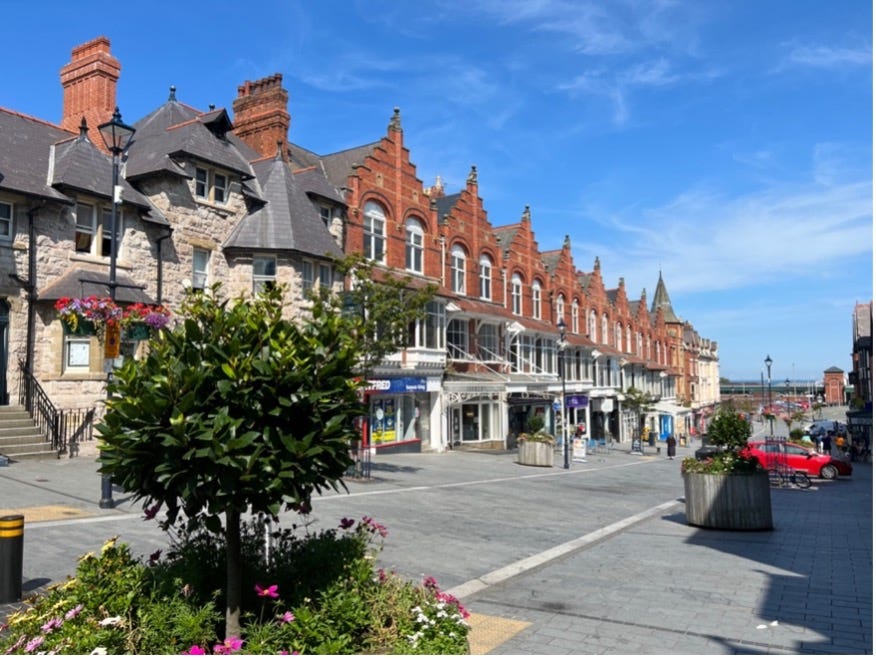


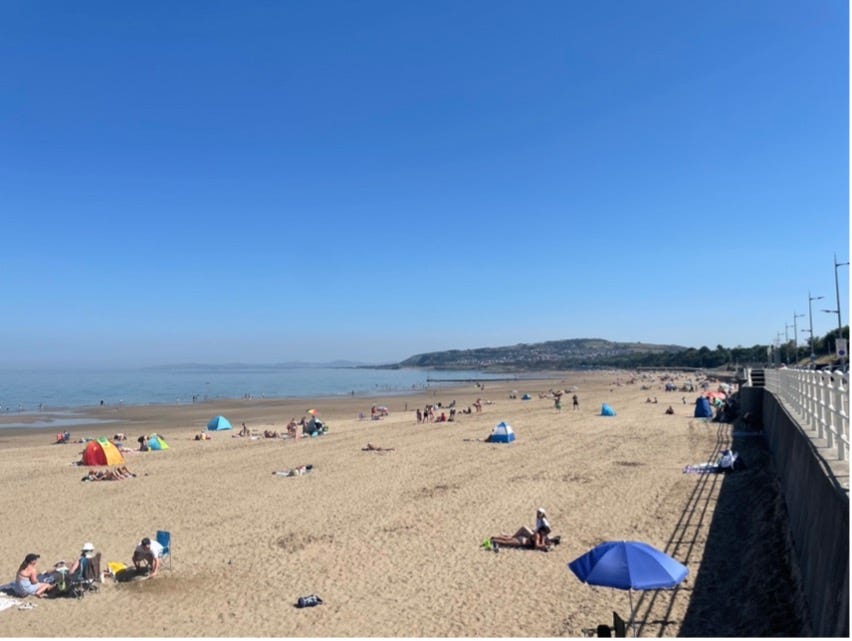
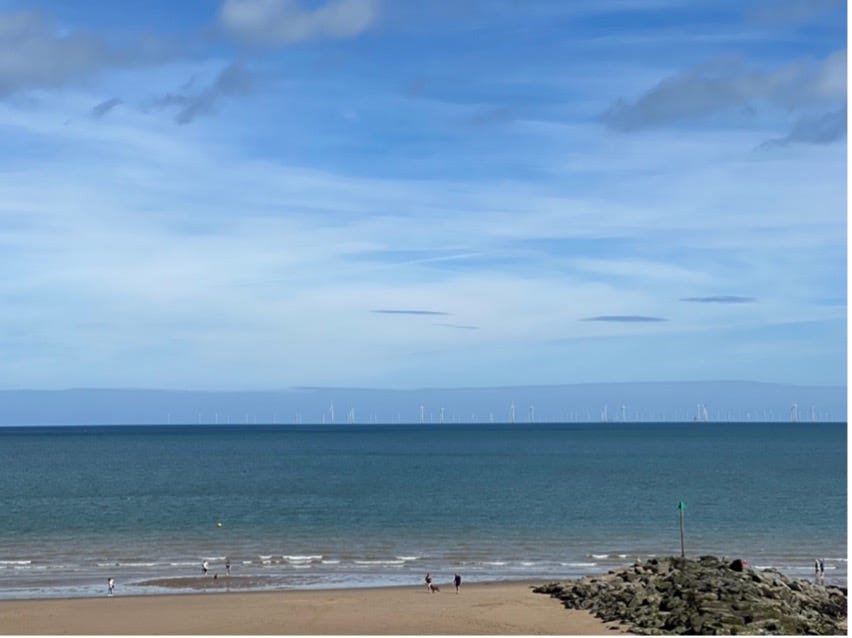

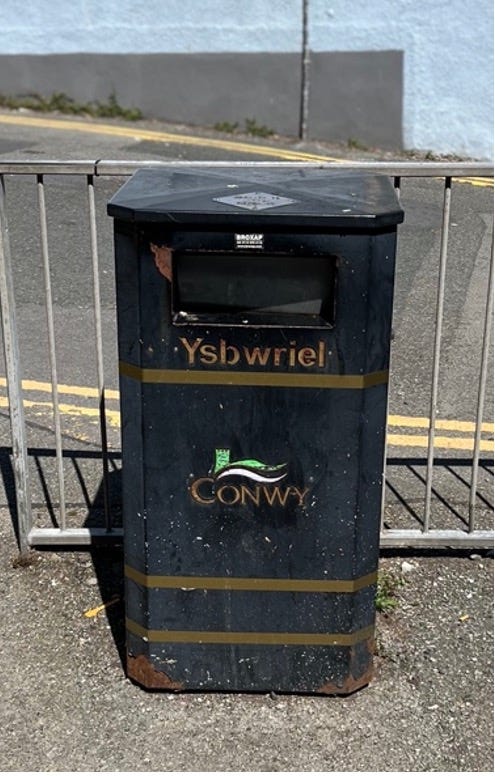
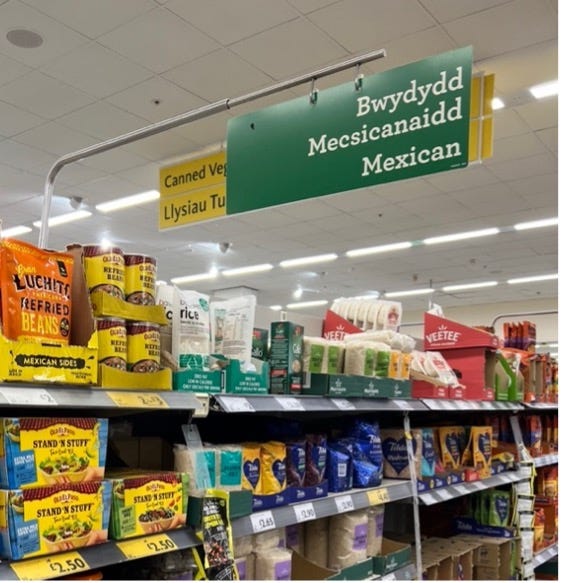
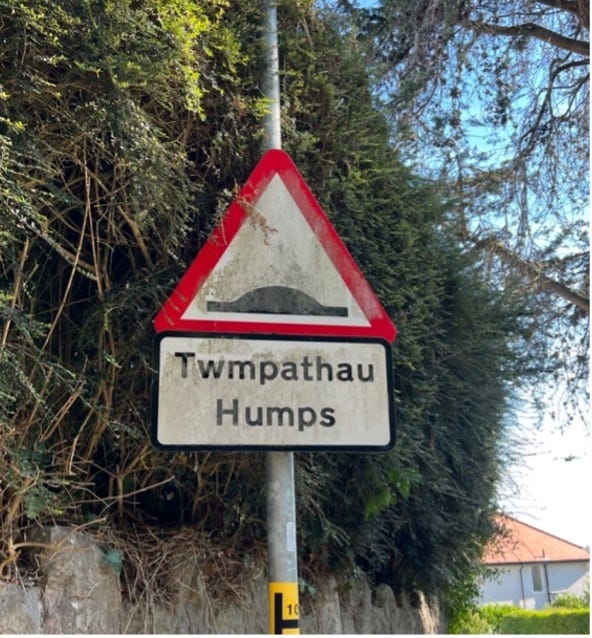
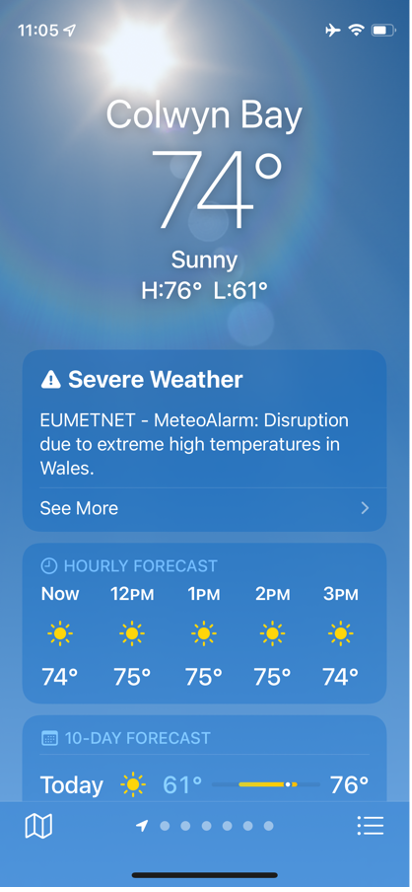
We noticed on the train to Wales that they say "yeah" in a very drawn out way: "yaaaah." (Or maybe that was specific to the groups of people in our train car? It was like their filler word, said after almost every sentence.)